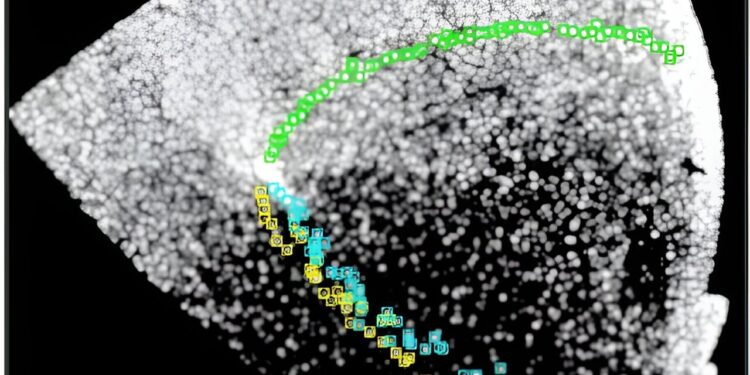High-probability members of the tidal tails of NGC 288. Green dots show stars along the trailing tail, cyan dots denote candidate stars in the inner front tail, and yellow dots show stars we assign to the outer front tail. Credit: Grillmair et al., 2024.
By analyzing data from various astronomical studies, astronomers studied an ancient globular cluster known as NGC 288. As a result, they detected several extended tidal tails associated with this cluster. The discovery was reported in a paper published September 25 on the preprint server. arXiv.
Tidal tails are thin, elongated regions of stars and interstellar gas extending into space. They form as a result of gravitational interactions between galaxies and star clusters. Observations show that some interacting objects have two distinct tails, while other systems have only one.
The detection and study of tidal tails offers clues about the tides experienced by the cluster and its internal dynamics. Such studies can also reveal essential information about the evolution of a cluster and could shed new light on the irregular distribution of dark matter in a galaxy. However, to date, only a handful of clusters with tidal tails have been detected in the Milky Way.
NGC 288 is a galactic globular cluster located approximately 29,200 light years away. It is an ancient metal-poor cluster, with an estimated mass of about 96,000 solar masses and a half-mass radius of about 27.9 light years.
Previous observations of NGC 288 detected its extended envelope and found evidence of tidal currents extending from the cluster. Now, a team of astronomers led by Carl J. Grillmair of the California Institute of Technology (Caltech) reports that these tidal currents are more complex than previously thought.
Observations by Grillmair’s team identified a clear surplus of stars extending at least 40 degrees north of NGC 288, along the 300-degree meridian, and perhaps as far as about 80 degrees from NGC 288. cluster, where it is submerged by the galactic disk. This feature, called the main tail, appears to be composed of two or more spatially offset and kinematically distinct stellar streams, each measuring less than about 650 light years across.
Additionally, astronomers discovered a trailing tail 35 to 70 degrees long extending to the upper right of the cluster. This rear tail was found to be considerably narrower in the sky than the front tail. The researchers added that the position of the trailing tail fits well with a flow model incorporating a massive Large Magellanic Cloud (LMC) – the satellite galaxy of the Milky Way.
According to the paper, whether the stars in these tidal streams belong to NGC 288 still needs to be confirmed, which should be done by radial velocity tracking measurements.
“If it can be confirmed that some of the more distant candidates once belonged to NGC 288, this stream will become another particularly sensitive probe of the shape of the inner halo potential and an important contributor to our understanding of the influence of the LMC and other components of the galaxy,” the scientists concluded.
More information:
Carl J. Grillmair, The multiple extended tidal tails of NGC 288, arXiv (2024). DOI: 10.48550/arxiv.2409.17361
Journal information:
arXiv
© 2024 Science X Network
Quote: Astronomers detect several extended tidal tails in an ancient globular cluster (October 6, 2024) retrieved October 7, 2024 from
This document is subject to copyright. Except for fair use for private study or research purposes, no part may be reproduced without written permission. The content is provided for informational purposes only.



